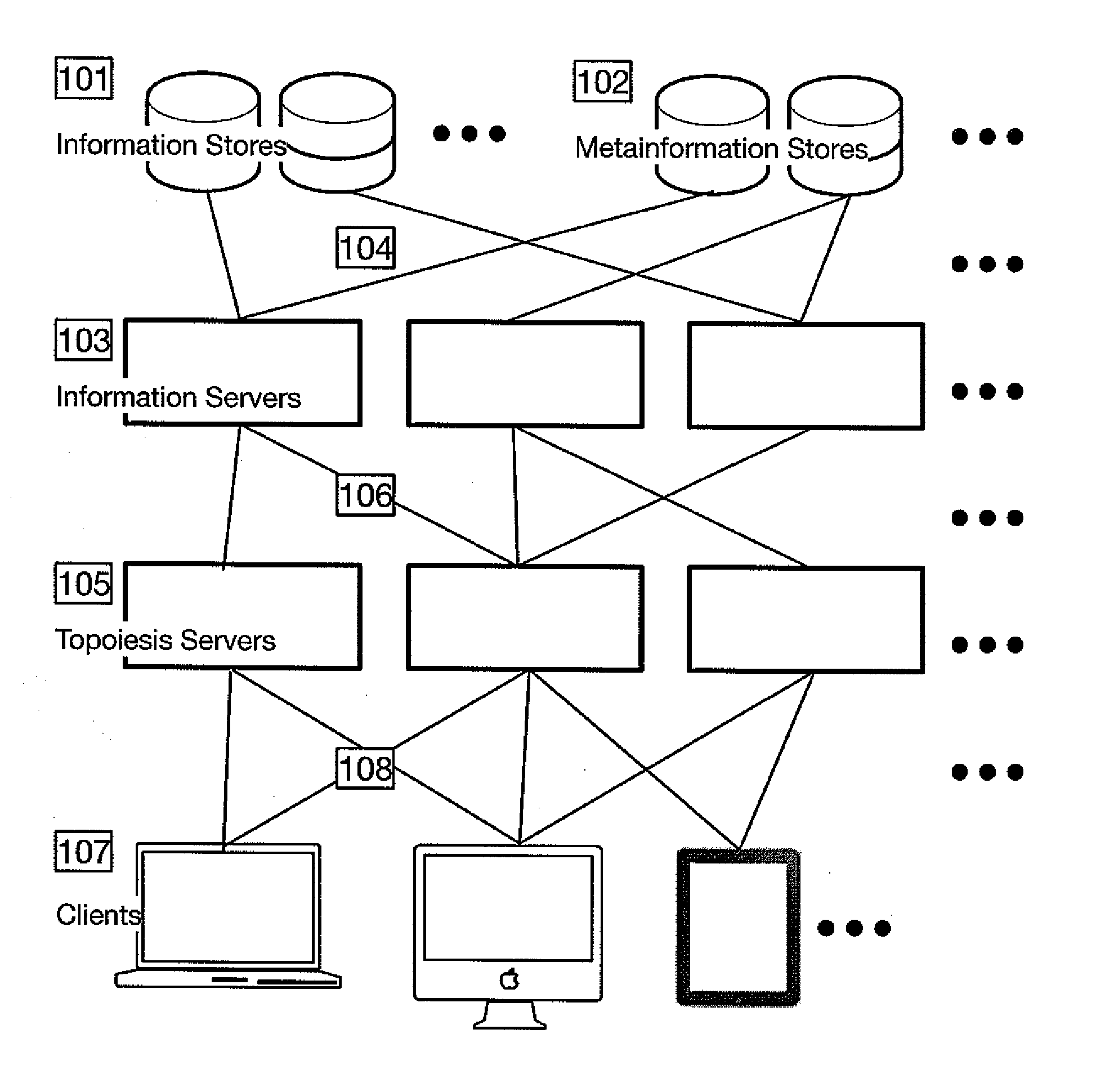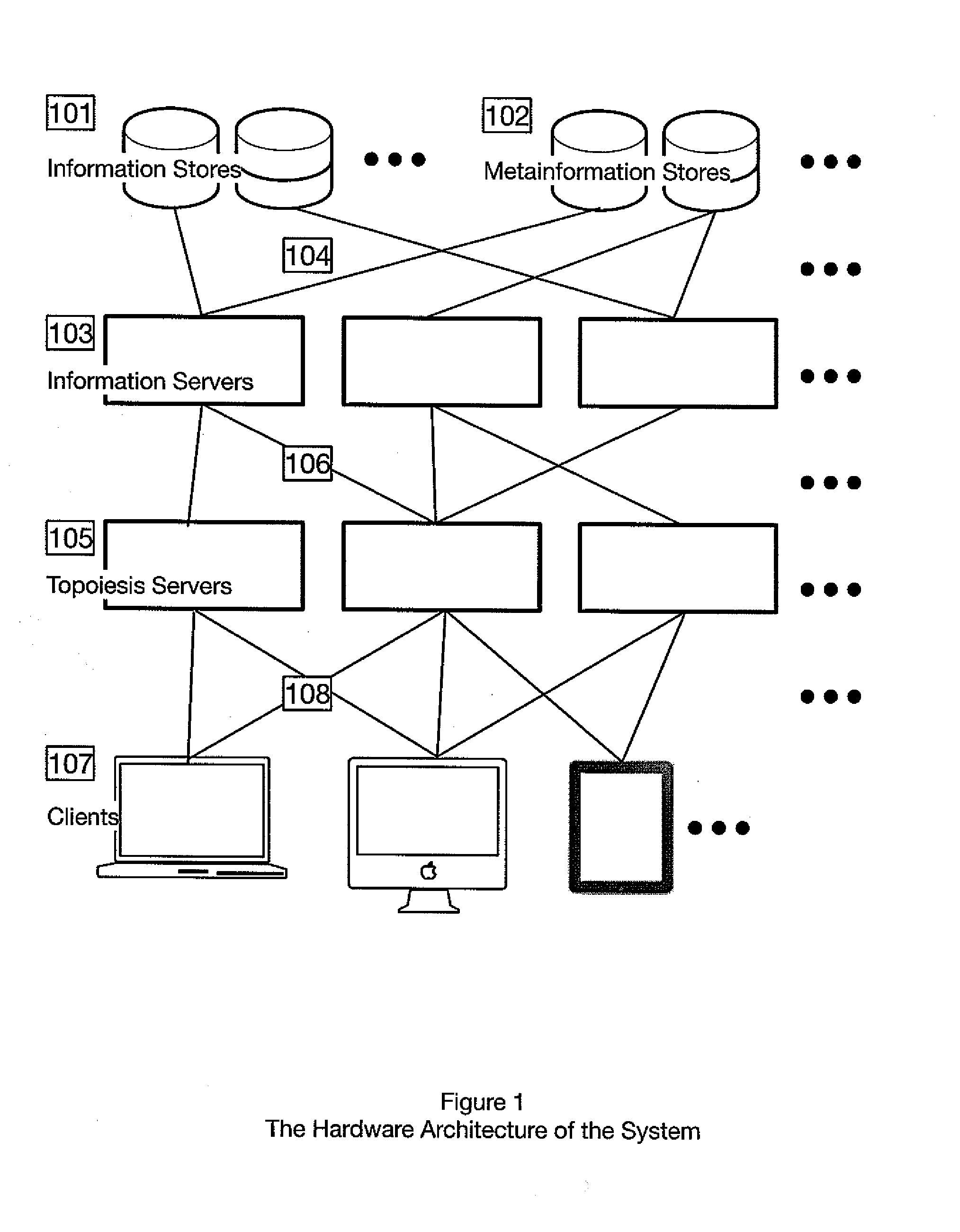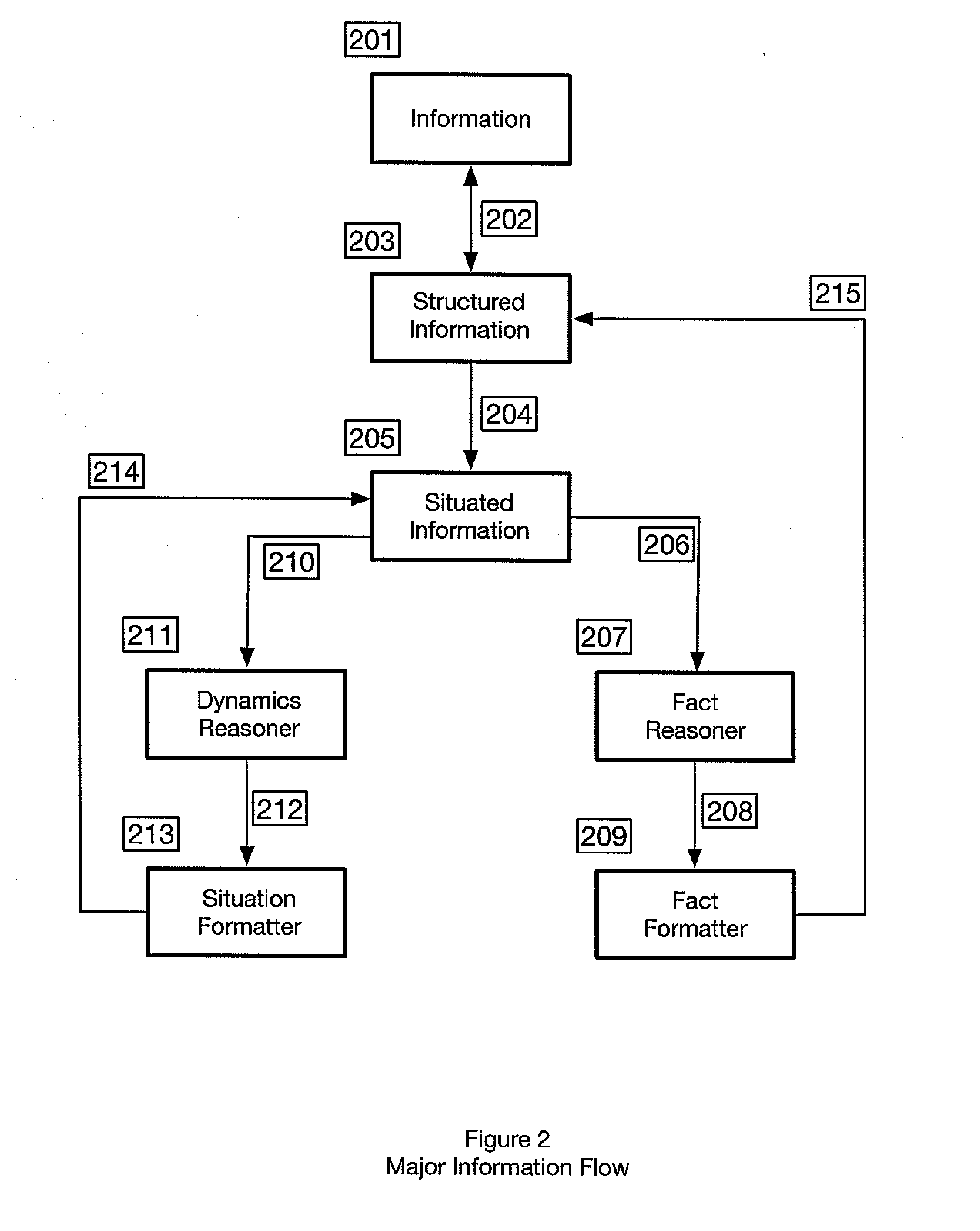System and Method For Situated Reasoning With Information
a system and reasoning technology, applied in the field of system and method for situated reasoning with information, can solve the problems of not being optimal, difficult or impossible to anticipate the context of a particular use, information is not well structured for many specialized uses,
- Summary
- Abstract
- Description
- Claims
- Application Information
AI Technical Summary
Benefits of technology
Problems solved by technology
Method used
Image
Examples
Embodiment Construction
[0056]In the following detailed description, reference is made to the accompanying drawings, which form a part hereof and illustrate specific embodiments that may be practiced. In the drawings, like reference numerals describe substantially similar components throughout the several views. These embodiments are described in sufficient detail to enable those skilled in the art to practice them, and it is to be understood that structural and logical changes may be made. The sequence of steps is not limited to that set forth herein and may be changed or reordered, with the exception of steps necessarily occurring in a specified order.
[0057]Embodiments described herein are designed to be used with computer systems. The computer systems may include any computer system, for example, a personal computer, a minicomputer, a mainframe computer, or mobile devices. The computer system will typically include at least one processor, display, input device, random access memory (RAM), hard drive mem...
PUM
 Login to View More
Login to View More Abstract
Description
Claims
Application Information
 Login to View More
Login to View More - R&D
- Intellectual Property
- Life Sciences
- Materials
- Tech Scout
- Unparalleled Data Quality
- Higher Quality Content
- 60% Fewer Hallucinations
Browse by: Latest US Patents, China's latest patents, Technical Efficacy Thesaurus, Application Domain, Technology Topic, Popular Technical Reports.
© 2025 PatSnap. All rights reserved.Legal|Privacy policy|Modern Slavery Act Transparency Statement|Sitemap|About US| Contact US: help@patsnap.com



